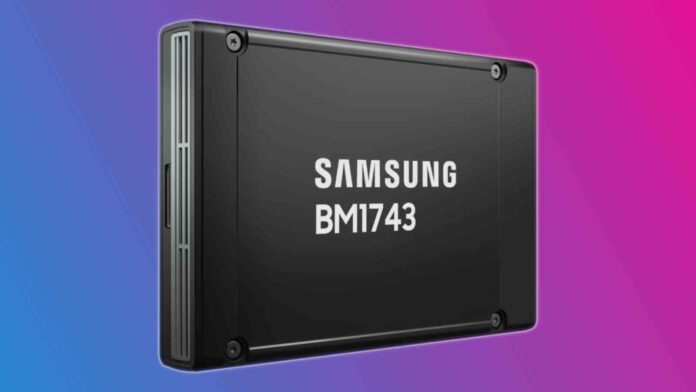Samsung unveiled its largest single SSD capacity offering a whopping 61.44TB of storage. This behemoth uses next-gen QLC chips to achieve this size while keeping fast enough speeds.
BM1743 uses Samsung’s 7th-generation QLC V-NAND (Quad-Level Cell Vertical-NAND) chips, boasting double the number of stacked layers compared to the previous generation. This allows these chips to deliver a much higher bit density, reducing costs. They’re not ideal for general desktops, but they look like some of the best SSDs for data centres. We can’t say for certain until we see tests, though.
This beast replaces the already impressive BM1733, which offered 15.36TB using 5th-gen QLC V-NAND back in 2020. There are no headaches with upgrades, as it features the same U.2 form factor. Its 61.44TB puts it right there with outstanding solutions like Nimbus’ 100TB Exadrive. Better yet, Samsung already has plans for higher capacities, announcing potential drives reaching up to 122.88TB.
According to Samsung, this drive can reach 7,200MB/s sequential reads and 2,000MB/s sequential writes, with 1,600,000 4KB random reads IOPS and 110,000 4KB random writes IOPS. The drive uses a PCIe 4.0 interface to deliver its maximum throughput, doubling speeds compared to last-gen. Moreover, BM1743 is available in the E3.S form factor to take advantage of PCIe 5.0 interfaces.
While it’s hard to verify, Samsung also claims a lower device power consumption alongside a noteworthy improvement in reliability. To be more specific, Samsung rates BM1743 for 0.26 drive write per day (159GB), against 0.18 for the previous generation. It can also retain data without power from one to three months.
Due to its low durability compared to TLC drives, BM1743 is better suited for read-intensive tasks. The first one that comes to mind is content delivery services which require large capacities with a focus on read speed to stream stored media. For that, this high-density drive should provide a nice balance between speed and capacity.

